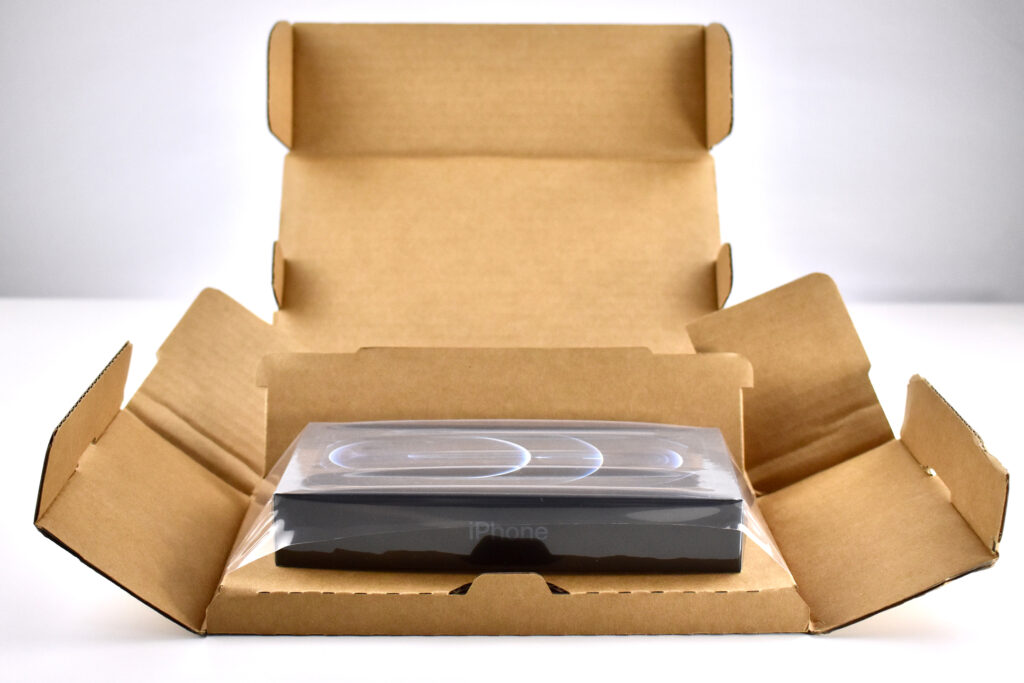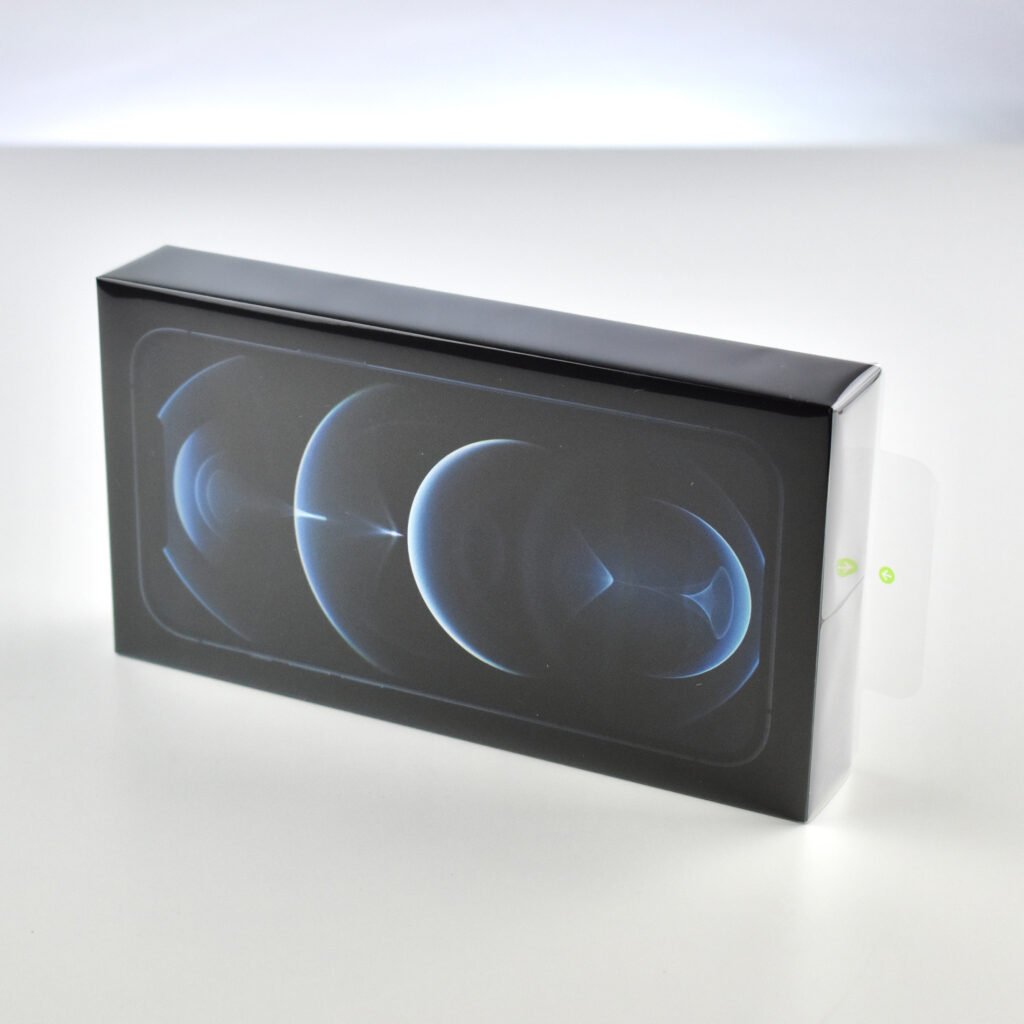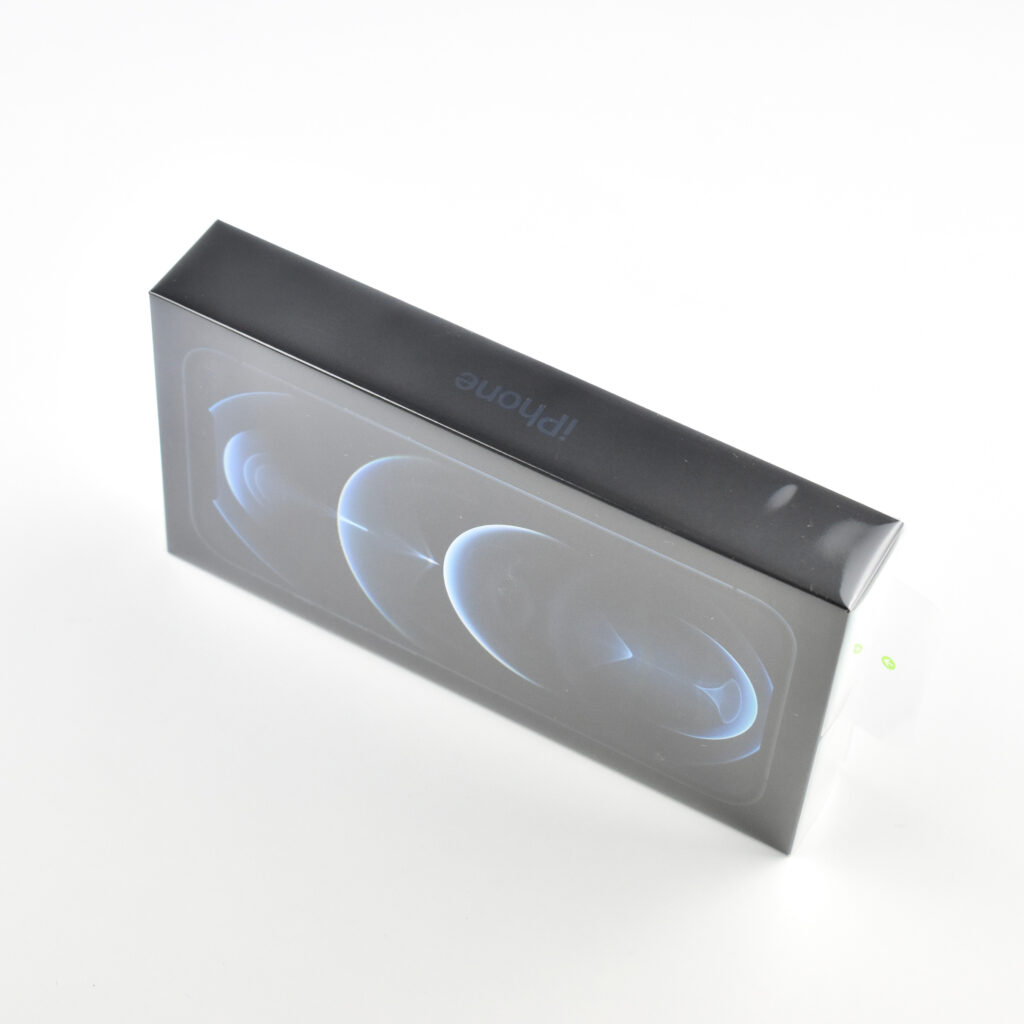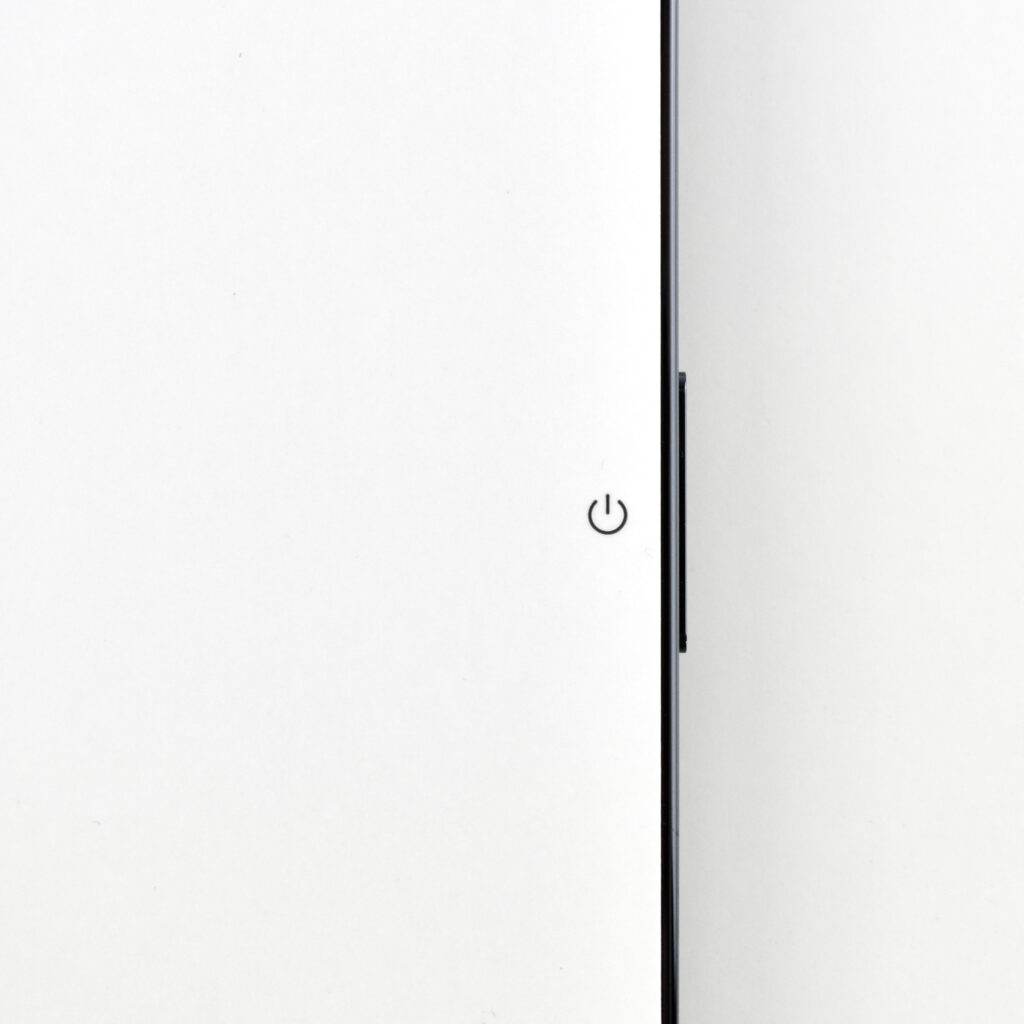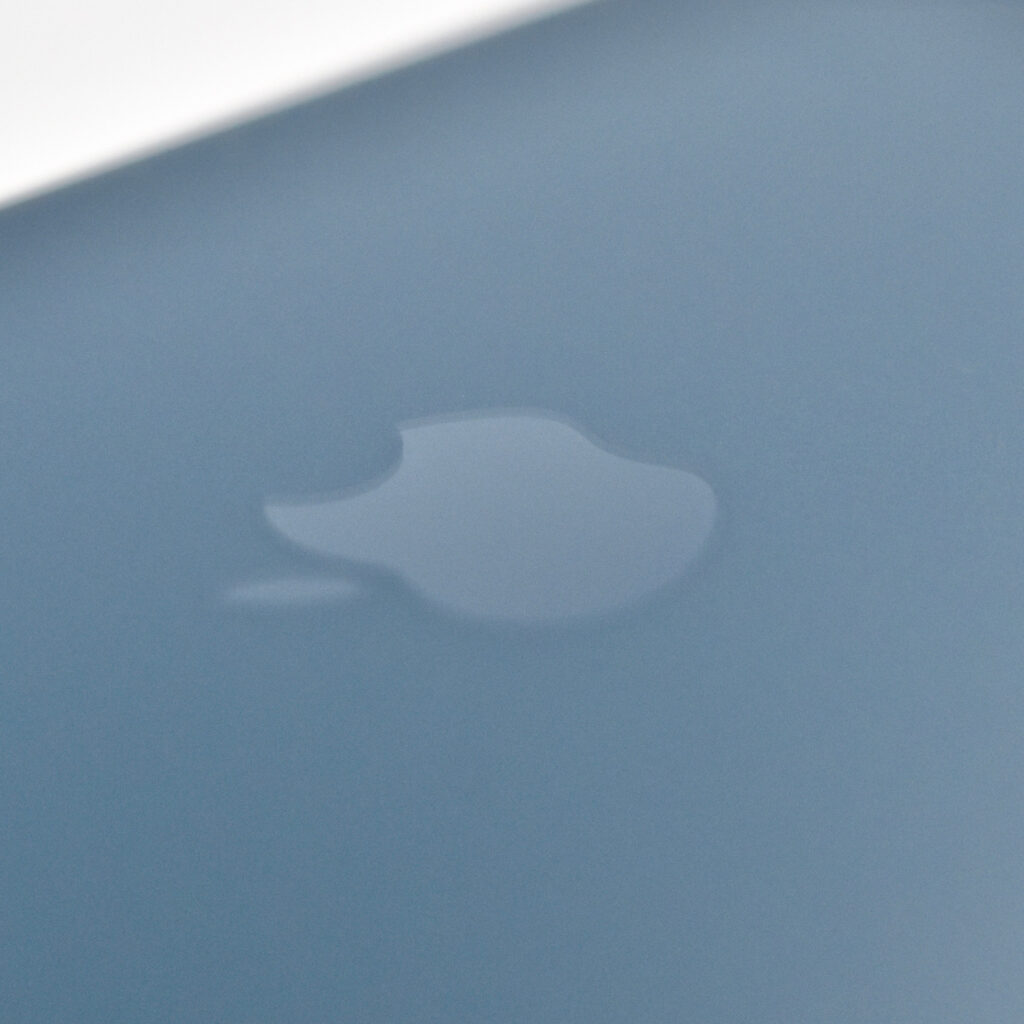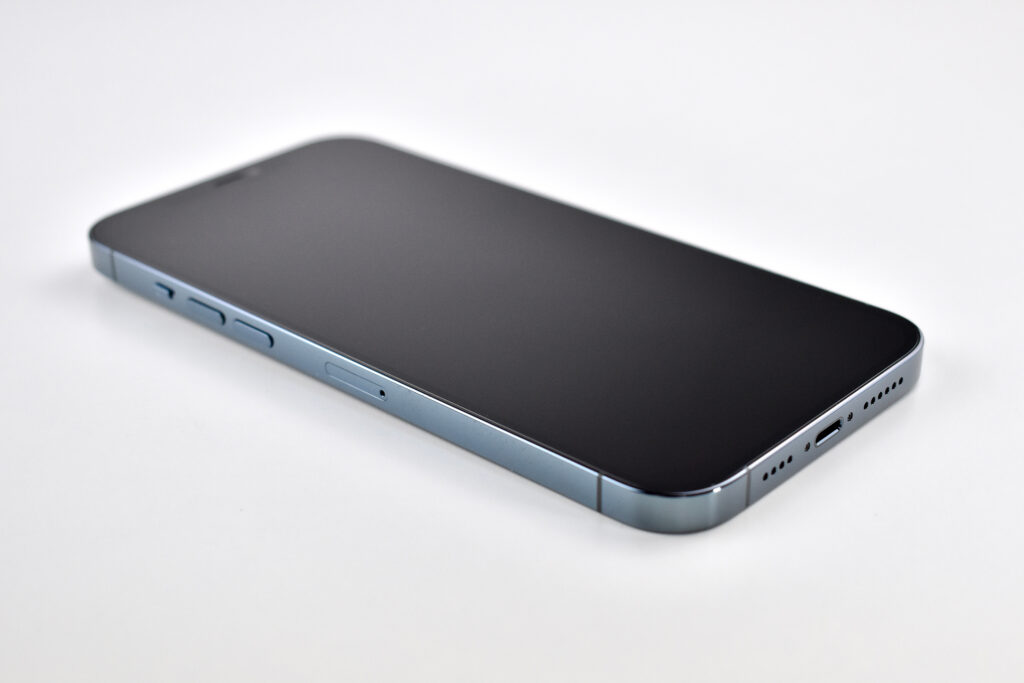In 2020 Apple released four iPhone 12 models simultaneously: the iPhone 12, the iPhone 12 mini, the iPhone 12 Pro, and the iPhone 12 Pro Max. The four options offer two “regular” iPhone models in two sizes, the 12 and 12 mini; and two “Pro” iPhone models in two sizes, the 12 Pro and 12 Pro Max. Overall, three sizes were available: mini, “regular,” and Pro Max, since the iPhone 12 and iPhone 12 Pro were the same size. The iPhone 12 models had arguably bolder color options, while the Pro models included more refined shades of Silver, Graphite, Gold, and Pacific Blue. This example is an iPhone 12 Pro Max with 256 GB storage in Pacific Blue.
The iPhone 12 Pro Max had an edge-to-edge 6.7-inch screen referred to as a “Super Retina XDR” display with 2778 x 1284 pixels (458 ppi). The camera system on the iPhone 12 Pro Max included four separate cameras, three on the back and one on the front. Apple listed the camera specifications for the Pro Max model as follows:
- Pro 12MP camera system: Ultra Wide, Wide, and Telephoto cameras
- Ultra Wide: ƒ/2.4 aperture and 120° field of view
- Wide: ƒ/1.6 aperture
- Telephoto: ƒ/2.0 aperture (iPhone 12 Pro); ƒ/2.2 aperture
- 2.5x optical zoom in, 2x optical zoom out; 5x optical zoom range
- Digital zoom up to 12x
- Night mode portraits enabled by LiDAR Scanner
- Portrait mode with advanced bokeh and Depth Control
- Portrait Lighting with six effects (Natural, Studio, Contour, Stage, Stage Mono, High‑Key Mono)
- Dual optical image stabilization (Wide and Telephoto)
- Sensor-shift optical image stabilization (iPhone 12 Pro Max Wide)
- Five-element lens (Ultra Wide); six‑element lens (Telephoto); seven-element lens (Wide)
The TrueDepth Camera on the front gained many new features from previous front iPhone cameras. The 12MP camera had features including:
- Portrait mode with advanced bokeh and Depth Control
- Portrait Lighting with six effects (Natural, Studio, Contour, Stage, Stage Mono, High‑Key Mono)
- Night mode
- Deep Fusion
- Smart HDR 3
- HDR video recording with Dolby Vision up to 30 fps
- 4K video recording at 24 fps, 30 fps, or 60 fps
Video recording features included:
- HDR video recording with Dolby Vision up to 60 fps
- 4K video recording at 24 fps, 30 fps, or 60 fps
- 1080p HD video recording at 30 fps or 60 fps
- 720p HD video recording at 30 fps
Sensors included Face ID, LiDAR Scanner, Barometer, Three‑axis gyro, Accelerometer, Proximity sensor, and an Ambient light sensor.
Apple described the iPhone 12 Pro Max finish as “surgical grade” stainless steel with flat stainless steel sides, a glass back, and a glass front with a “Ceramic Shield” cover for increased durability. The back had a MagSafe connector for wireless charging that used a magnet to attach a wireless charger (it is unknown why the term “-Safe” was used since the charger introduced no safety features).
The iPhone 12 Pro Max used the Apple A14 Bionic processor with 6 GB of RAM and 128, 256, or 512 GB of flash storage. Wireless connectivity included 802.11ax Wi-Fi, 5G wireless, Bluetooth 5.0, and NFC (for Apple Pay). Its only wired connection was a Lightning port.
My personal iPhone upgrade pattern had been established as upgrading to “major” model releases, but skipping the “update” models. For example, I would upgrade from the iPhone 6, skip the 6s model, and then upgrade to the iPhone 7. However, beginning with the iPhone 8, this pattern was broken when the iPhone X [ten] was released along with the iPhone 8—and no iPhone 9 was released. Since the iPhone X and the iPhone 8 were released simultaneously, I never used an iPhone 8. Thus, I went from the iPhone 7 to the X, skipped the XR, and upgraded to the iPhone 11. Apple broke the pattern again by jumping from the iPhone 11 to the iPhone 12, skipping what may have been called the iPhone 11S or 11R (following previous conventions).

